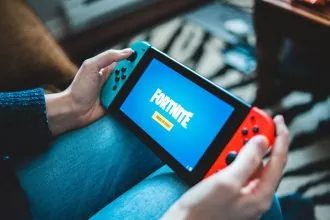The Delicate Art of Game Monetization in 2024
Video game monetization has become a balancing act. On one side, developers need to generate sufficient revenue to cover ever-increasing production costs and ensure the sustainability of their projects. On the other, players are increasingly sensitive to aggressive commercial practices that harm their gaming experience.
According to a recent Newzoo study, the global video game market generated $184.4 billion in 2023, with continued growth projected for years to come. Yet, 68% of players say they’ve abandoned a game due to monetization practices they deemed unfair. This paradox represents a major challenge for all developers.
So how do you design economic models that generate sustainable revenue while preserving the integrity of the gaming experience? Through this article, we unveil 10 strategies proven by professionals that will allow you to intelligently monetize your video game while cultivating a loyal and satisfied community.
Whether you’re an independent developer or an established studio, these tips will help you find the right balance between profitability and respect for your audience.
Understanding the Fundamentals of Ethical Game Monetization
Before exploring specific strategies, it’s essential to understand what constitutes an ethical approach to monetization. Games aren’t simply products, but interactive experiences where emotional engagement plays a central role.
Value-Price Balance at the Heart of Player Satisfaction
Players don’t fundamentally object to spending money. What they reject is the feeling of not receiving value proportional to their investment. A SuperData Research study reveals that 74% of players are willing to make in-game purchases if they perceive clear added value.
Effective economic models are based on a fundamental principle: offering the player a tangible benefit (time saving, customization, experience extension) in exchange for their financial contribution. This transaction must always seem fair in the eyes of the consumer.
Transparency as the Foundation of Trust
Transparency in your monetization practices is non-negotiable. Players must clearly understand what they’re getting for their money, without unpleasant surprises or hidden costs. This clarity establishes a lasting relationship of trust between developers and their community.
Strategy #1: Design a Balanced Freemium Model
The freemium model (free game with purchase options) has established itself as the dominant approach, particularly on mobile. Its effectiveness rests entirely on its balance.
How to Structure Accessible Progression Without Frustrating Paywalls
The key to a successful freemium model is to allow satisfying progression for non-payers while offering attractive but non-essential benefits to payers.
Step-by-step design of a balanced freemium system:
- Identify the core gameplay loop that must remain 100% accessible for free
- Determine natural friction points where players might want to accelerate their progression
- Create purchase options that alleviate these frictions without completely eliminating them
- Establish a system of regular rewards for free players
- Test extensively with real players to identify potential imbalances
Fortnite perfectly exemplifies this approach, generating billions solely through cosmetics with no impact on gameplay. According to Epic Games, 69% of players have never spent money in the game but continue to play regularly, creating a massive user base that attracts paying players.
Optimal Ratios Between Free and Premium Content
GameAnalytics research suggests that an effective ratio maintains about 75-85% of core content accessible for free, with purchases oriented toward:
- Progression accelerators (time savings)
- Aesthetic customization (personal expression)
- Additional content (more experience)
Strategy #2: Adopt a Value-Added Subscription Model
The subscription model is experiencing a renaissance in the gaming industry, offering developers predictable and recurring revenue.
New Trends in Subscription Gaming
Subscription has evolved far beyond the simple monthly model. Services like Xbox Game Pass, PlayStation Plus, or Apple Arcade have redefined consumer expectations regarding value for money.
For independent developers, targeted micro-subscriptions can be more effective than an all-in-one pass. For example, Darkest Dungeon introduced the “Crimson Court Pass” which progressively unlocked additional content over several months, maintaining player engagement over time.
How to Structure Irresistible Subscription Offers
An effective subscription must combine:
- Regular exclusive content (minimum monthly)
- Permanent benefits (progression bonuses, customization options)
- Cumulative rewards (the longer players stay subscribed, the more they get)
- Flexibility of commitment (quarterly/annual options with discounts)
| Subscription Level | Monthly Price | Exclusive Content | Permanent Benefits | Annual Savings |
|---|---|---|---|---|
| Basic | $4.99 | Early access | +10% progression | 10% |
| Premium | $9.99 | Early access + exclusive items | +15% progression + monthly cosmetics | 15% |
| Ultimate | $14.99 | All content + betas | All benefits + VIP status | 20% |
Strategy #3: Design Desirable and Non-Intrusive Microtransactions
Cosmetic items represent the form of microtransaction most accepted by players because they don’t affect game balance. However, not all cosmetics are equal in terms of attractiveness.
The most desirable cosmetics share these characteristics:
- High visibility during the gaming experience
- Distinctive design recognizable by other players
- Customization allowing individual expression
- Well-balanced rarity (neither too common, nor inaccessible)
League of Legends has perfected this approach, generating billions with skins that not only transform the appearance of characters but also their animations and sound effects, creating substantial perceived value.
Fatal Mistakes to Avoid in Microtransaction Design
The following practices invariably generate resentment:
- Pay-to-win: Offering significant competitive advantages for payment
- Lootboxes without transparency: Not clearly disclosing odds
- Removed content: Extracting content that should logically have been included in the base game
- Psychological manipulation: Using fear of missing out (FOMO) as the primary purchase driver
- Double monetization: Combining a high entry price with aggressive microtransactions
Strategy #4: Harness the Potential of Substantial DLC and Expansions
Downloadable content (DLC) represents an opportunity to extend your game’s lifespan while generating additional revenue.
How to Plan a Content Calendar that Builds Community Loyalty
Strategic DLC planning can transform a one-time success into a lasting franchise:
- Establish a public roadmap: Clearly communicate your future content plans
- Alternate between free and premium content: Maintain engagement with free updates between paid DLCs
- Listen to your community: Prioritize content most requested by your players
- Maintain a consistent rhythm: Regularity is preferable to long periods without new content
The Witcher 3 excelled in this approach with 16 free DLCs followed by two major paid expansions (Hearts of Stone and Blood and Wine), each offering a substantial experience fully justifying its price.
Optimal Expansion Pricing According to Game Type
DLC pricing should reflect their scope and the base game price:
| DLC Type | Typical Content | Recommended Price (% of base game) |
|---|---|---|
| Cosmetic | Appearances, skins | 5-15% |
| Minor gameplay | New characters/modes | 15-25% |
| Medium expansion | New missions/areas | 25-40% |
| Major expansion | Complete story, mechanics | 40-60% |
Strategy #5: Implement an Engaging Battle Pass
The battle pass system, popularized by Fortnite, has proven remarkably effective at maintaining engagement while generating predictable revenue.
Essential Components of a Successful Battle Pass
An effective battle pass must include:
- Clear progression: Players must understand exactly how to progress
- Tiered rewards: Combine frequent small rewards and occasional major ones
- Dual track: A free track and a more generous premium track
- Seasonal theming: Renew interest with changing themes
- Varied objectives: Encourage different play styles and content exploration
Balancing Time Investment and Player Satisfaction
The main pitfall of battle passes is creating excessive pressure that transforms the game into a “second job.” A Player Research study indicates that players begin to feel frustration when they need to play more than 10 hours weekly to progress adequately.
Implement these safeguards:
- Design for 75-80% pass completion with regular but moderate play
- Catch-up mechanisms for players falling behind
- Permanent challenges that don’t disappear with weekly rotation
- “Progression saving” system for unredeemed rewards
Strategy #6: Diversify Revenue Sources Beyond the Game
Modern monetization extends well beyond the traditional boundaries of the game itself.
Merchandising and Derivative Products as Natural Extensions
According to Licensing International, video game merchandise generated $40.9 billion in 2022, exceeding movie merchandising revenues for the first time.
Even for independent studios, accessible options exist:
- Print-on-demand partnerships with platforms like Redbubble
- Figurines and collector items via specialized companies like Fangamer
- Limited physical editions in collaboration with specialized publishers like Limited Run Games
- Music and soundtracks on streaming platforms
Intelligent Exploitation of Your Intellectual Property
Your IP can generate revenue well beyond the initial game:
- Licenses for other media (books, series)
- Collaborations with other franchises (as Fortnite has done extensively)
- Affiliate programs with content creators
- Asset monetization (selling 3D models, music, etc.)
Hollow Knight brilliantly extended its reach with art books, vinyl records, and musical collaborations that strengthened fan attachment while generating additional revenue.
Strategy #7: Create a Robust and Balanced In-Game Economy
A well-designed game economy is the foundation of sustainable monetization.
Macroeconomic Principles Applied to Virtual Universes
Designing a game economy involves understanding fundamental economic principles:
- Controlled scarcity: Limiting certain resources to maintain their value
- Economic sinks: Creating mechanisms that remove resources from the system
- Source balance: Meticulously controlling the introduction of new resources
- Deflation/inflation cycles: Regular adjustments to maintain balance
Path of Exile has created one of the most sophisticated virtual economies, with seasonal “leagues” that reset the economy and prevent runaway inflation while maintaining long-term engagement.
How to Implement a Marketplace that Benefits Both Players and Developers
In-game marketplaces allow players to trade with each other while generating revenue for developers:
- Moderate transaction fees (5-15%)
- Value verification system to prevent scams
- Temporary listing options with automatic return
- Complete transparency of price histories
Steps to create a balanced marketplace:
- Establish a base value system for items
- Implement market analysis tools accessible to players
- Create anti-speculation and anti-monopoly measures
- Maintain a balance between account-bound and tradeable items
- Regularly monitor and adjust drop rates and exchange rates
Strategy #8: Adapt Your Monetization to Different Platforms
Each platform has its own ecosystem and specific expectations regarding monetization.
Platform-Specific Monetization: Mobile, Console and PC
| Platform | Dominant Models | Price Expectations | Specificities |
|---|---|---|---|
| Mobile | Free-to-play with IAP | Low prices ($0.99-$4.99) | Short sessions, impulse purchases |
| Console | Premium + DLC/Season Pass | Medium-high prices ($9.99-$29.99) | Longer cycles, high loyalty |
| PC | Subscriptions, Early Access | Highly variable | Modding, frequent updates |
Optimizing Revenue Through Cross-Platform
Cross-platform offers unique monetization opportunities:
- Purchase synchronization between platforms (with attention to different commissions)
- Platform-specific offers adapted to the habits of each ecosystem
- Cross-platform bundles with incentive discounts
- Facilitated migration to encourage multi-platform adoption
Genshin Impact has masterfully exploited this approach by maintaining a consistent experience while adapting its acquisition and monetization strategies to the specificities of each platform.
Strategy #9: Leverage Data for Personalized Monetization
Data analysis allows you to refine your economic model in real-time and adapt it to different player segments.
Essential Metrics to Monitor for Revenue Optimization
Critical KPIs for effective monetization include:
- ARPU (Average Revenue Per User)
- ARPPU (Average Revenue Per Paying User)
- Conversion rate: Percentage of free players becoming paying customers
- Churn rate: Rate at which players abandon the game
- LTV (Lifetime Value): Total value generated by a player throughout their lifetime
- Engagement depth: Depth of engagement before first purchase
How to Segment Your Audience for Targeted Offers
Personalizing offers based on player behavior significantly increases conversions:
- Social players: Target them with visible customization offers and multiplayer packs
- Collectors: Offer limited series and collectible items
- Competitors: Provide analysis tools and prestige cosmetics
- Explorers: Focus on additional content and world expansions
- Achievers: Create premium challenges with exclusive rewards
Warframe excels in this approach by offering different packs adapted to various play styles, with conversion rates above the industry average.
Strategy #10: Communicate Effectively About Your Economic Model
Transparent communication around your monetization model is as important as its design.
The Importance of Transparency in Purchase Presentation
Players appreciate clarity about what they get for their money:
- Clearly explain the value of each purchase
- Avoid obfuscation techniques (such as complex virtual currencies)
- Always display the real price alongside the virtual currency price
- Provide detailed previews before purchase
- Implement a generous refund policy
How to Present Monetization Changes to Your Community
Modifications to your economic model are inevitable but potentially risky:
- Announce changes well in advance
- Clearly explain the reasons behind these adjustments
- Offer compensation for major modifications
- Test first with a restricted group
- Be ready to adjust based on feedback
No Man’s Sky completely transformed its public perception by adopting honest communication and massively adding free content, proving that a player-centered approach can rehabilitate even a damaged reputation.
Common Mistakes to Avoid in Game Monetization
Even with the best intentions, certain pitfalls can compromise the relationship with your community.
Predatory Practices that Alienate Players
Absolutely avoid:
- Lootboxes targeting minors
- Excessive FOMO (Fear Of Missing Out) mechanisms
- Sudden “pay walls” after significant time investment
- Strategic nerfs followed by paid solutions
- Forced social comparisons encouraging spending
How to Recover After a Monetization Controversy
If despite everything you find yourself facing controversy:
- Promptly acknowledge the problem
- Offer immediate compensation
- Present a clear action plan
- Involve the community in restructuring
- Demonstrate your commitment through concrete actions
Star Wars Battlefront II managed to completely reinvent itself after a major controversy by completely overhauling its progression and monetization system.
Betwiseup Editorial Opinion
Video game monetization will continue to evolve as player expectations and technologies transform. The most successful developers aren’t necessarily those who extract the most value in the short term, but those who build lasting relationships with their community.
The most resilient models combine multiple strategies adapted to different player segments while maintaining a fundamentally fair experience. Monetization should always be designed as a natural extension of gameplay, never as an obstacle to its appreciation.
By applying the principles described in this article, you can create an economic model that supports the continued development of your game while respecting the experience and investment of your players. It’s this balanced approach that will allow your studio to thrive in an increasingly competitive and demanding market.
We encourage you to regularly reassess your monetization strategy and stay attuned to market developments and feedback from your community. Flexibility and adaptability will be your best assets for sustainable growth.
[CTA] Want to deepen your monetization strategy? Download our comprehensive guide “Ethical Video Game Monetization in 2024” and receive a free 30-minute consultation with our experts.
FAQ: Everything You Need to Know About Video Game Monetization
What is the most profitable monetization model for indie games?
The premium model with DLC often remains the most suitable for indie games with strong narrative or mechanical identity. It allows fully valuing creative work while avoiding the balancing challenges of a free-to-play economy. Studies show that premium indie games generate on average 3.8 times more revenue per active user than their free-to-play counterparts.
How do I determine the optimal price for my game?
The optimal price depends on multiple factors: content scope, graphical quality, lifespan, uniqueness factor, and competitive positioning. A Steam analysis reveals that the $19.99-$24.99 range generally offers the best balance between sales volume and total revenue for quality indie games.
Are lootboxes legally risky in 2024?
Lootbox regulation varies considerably across jurisdictions. Belgium and the Netherlands have banned them, while other countries now impose probability disclosure requirements. Legislative evolution tends toward stricter regulation, making this mechanic increasingly risky from both legal and reputational standpoints.
How do I precisely calculate the LTV (Lifetime Value) of my players?
LTV calculation involves several variables: average ARPU, retention at different periods, and average lifetime. The basic formula is LTV = ARPU × Average lifetime. For increased precision, use cohort models that track value generated over specific periods (30d, 90d, 365d) and extrapolate with a calculated disengagement rate.
What are typical conversion ratios in the mobile gaming industry?
Current benchmarks for free-to-play mobile games indicate average conversion rates (free-to-paying players) of 2-5%. High-performing games reach 8-10%, while exceptional titles like Pokémon GO have reported peaks of 15%. The first purchase remains the most difficult to trigger, with second purchase rates generally 3 to 4 times higher.





